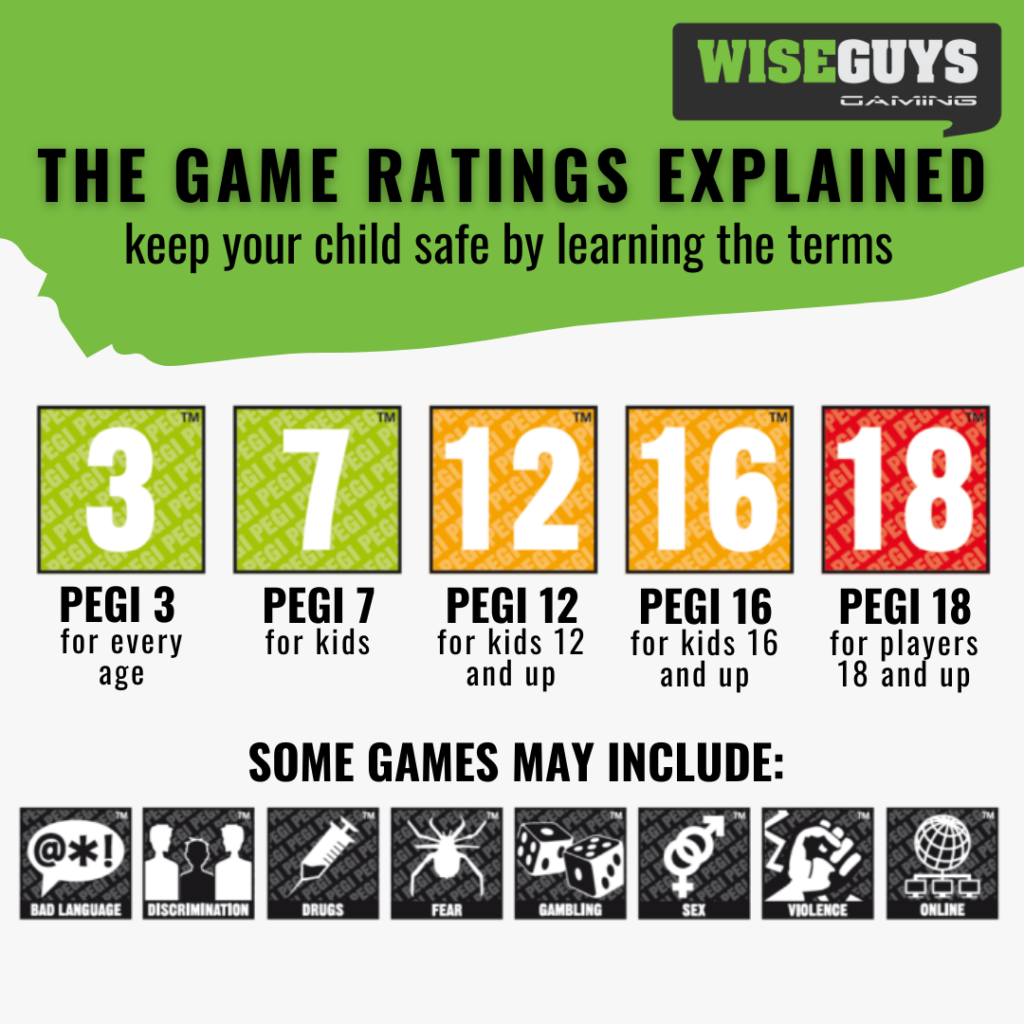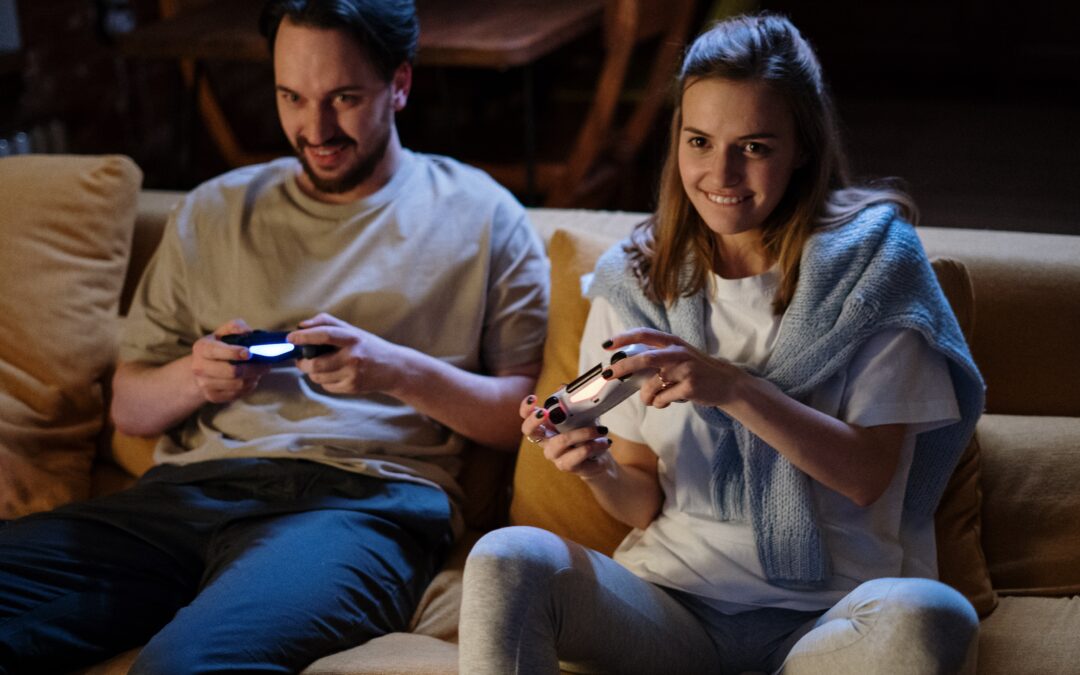Around 80% of children under 18 regularly play online games and, when played in moderation the games can be a fun, sociable and interactive opportunity for children and teens to learn and solve problems.
Most will not suffer any harm but there are known effects of gambling addiction in children that you need to be aware of. We have created a guide specifically for you, to make sure your child is safe when gaming.
ISSUE: In-game purchases
Games that have in-app purchases to purchase “tokens” or “subscriptions” could lead children to accumulate unexpected credit or debit card transactions for parents and guardians, teaching the child that it is fine to spend money like nothing, since it isn’t theirs and they are not working for it.
SOLUTION: How do I fix this?
One way on how this can be fixed is by making children do chores around the house in exchange for in-game purchases. Parents sometimes insist that their child pay off the debt, including by starting a pocket money scheme, reducing spending on other treats, or asking teenagers to contribute from earnings.
- Can you get a refund for unauthorized in-game purchases?
If your child accidentally spends too much on in-game purchases, getting a refund depends on the terms and conditions of the game platform or game developer. It is not always possible to request a refund, even in cases where the parental control is not set up correctly, so make sure you find out.
ISSUE: Effects of gambling addiction on education and personal growth
The implications of excessive play can have harmful effects on children’s education and well-being.
- Interference with studies – One of the signs of gambling addiction is the impact on other areas of life. For example, the school work may suffer, which could be including boredom in class, difficulty concentrating, or low motivation to complete homework.
- Exposure to violent, graphic or sexualized content – Ofcom found that an increasing number of parents are concerned about the content of the games they play. This includes 25% of parents of 3-4 year old players (compared to 10% in 2017).
Most major titles come with the age guide, but as with movies or TV shows, many kids access the content at a young age. Fortnite, for example, has a rating of 12+, but many school-age children play it.

SOLUTION: How do I fix this?
It can be difficult for children to cope with the pressure of not playing certain less appropriate games that “Everyone” seems to be playing because they don’t want to feel left out.
Talking to them about why these games aren’t appropriate and valuing their point of view is one way to help them understand why you might not want them to play these games.
Also, if your child encounters these games while at a friend’s house, it can be difficult to keep control of what they play.
The best way to handle this is to talk to their parents to explain why you have set limits for your child so that they respect this in regards to your child. Finally, trying to direct their attention to age-appropriate games that offer the same amount of excitement is a good way to stay engaged and broaden their vision of what games are available to them.
Check out more tips on our article Tips on keeping online gaming healthy for your child !
ISSUE: Impact on mental and physical health
All of the following items may indicate gambling addiction. These symptoms tend to be more pronounced when children or young people are not playing, even if they are prevented from playing:
- Anger or Anger – If a parent interrupts a gaming session or broadband goes down, what’s the reaction? If children or young people respond with anger or rage, including yelling, screaming, or physical attacks, then this is something worth noting.
- Isolation and loneliness – If children spend long periods of time playing alone, this reduces interaction with relatives and friends in real life. While many young gamers use online chat in multiplayer games, even to talk to friends in real life, this should be balanced with interactions in the same physical space.
- Depression – In normal players, ongoing listlessness, sadness, or lethargy can be signs of gambling problems. Depressive symptoms will be more noticeable when they are not playing, i.e. in the withdrawal phase.
Excessive play repeatedly for long periods can potentially cause physical stress to players.
- Repetitive Strain Injury (RSI) – Children and young people who play for prolonged periods may be affected by RSI. Stiffness, aches, pain, and numbness are signs to watch out for. For example, “nintendinitis” refers to thumb, wrist, and hand problems associated with gaming on game consoles. Eye strain is also common if you watch screens for long periods without taking a break. Screen glare can also affect vision.
- Bad posture – If you squat in a chair or are hunched over your cell phone, then it’s time to take a break. While these positions do not immediately harm most children, they can lead to serious problems in adulthood.
- Headaches and Migraines – Headaches can be related to physical causes such as eyestrain, poor posture or dehydration. Or they can be related to mental health problems, including anxiety and depression. Young players who have regular headaches should be checked by a doctor.
- Lack of physical activity – Playing sedentary games for long periods can mean that people lose exercise. The World Health Organization recommends that children and teens, ages 5 to 17, do at least 60 minutes of activity per day.
- Poor Nutrition or Self-Care – When gambling addiction takes over, children and young people may skip meals, rely on junk food, resist bathroom breaks, or have poor hygiene.
- Poor quality sleep – Playing stimulating games for many hours at a time, particularly late at night, will make sleeping more difficult.
SOLUTION: How do I fix this?
We spoke with John Isaacson, full-time gaming content creator, who also deals with gaming addiction and its side effects.
He says: “I know the struggles of video game addiction all too well. The dopamine hit from a micro achievement in a modern online game feels very similar to that of social media scrolling or binge-watching a Netflix series.”
He also shares what he does to fight these: “My method for managing play-time is to physically get up between rounds. Modern games want to throw you straight back into an online match filled with bursts of pleasure-inducing experience point notifications.
But oftentimes standing up and walking around can give you the clarity you need to consider how much time you are spending in front of that screen. It’s also a great way to make sure you aren’t sedentary for too long.”
It is understandable to believe that if you can keep your child’s games under control, everything will return to normal. However, any addiction is better understood as a symptom rather than a problem. For this reason, telling your child to cut down on their play, punishing them for breaking the rules or restricting their access to devices will likely not permanently fix their difficulties.
The key to real change is this: What is so distressing or unsatisfying about your child’s life when he or she is not playing? To overcome gambling addiction, your child will need help discovering the answers to this question and learning how to cope in a healthier way.
Of course, it’s an important step for your child to recognize the consequences of harmful games, including how health, relationships, education and finances are affected – but that’s just the beginning. There comes lasting recovery from the disorder of play, awareness and emotional resilience . Your child needs to know how to recognize and manage emotional distress even when they crave play.



Recent Comments